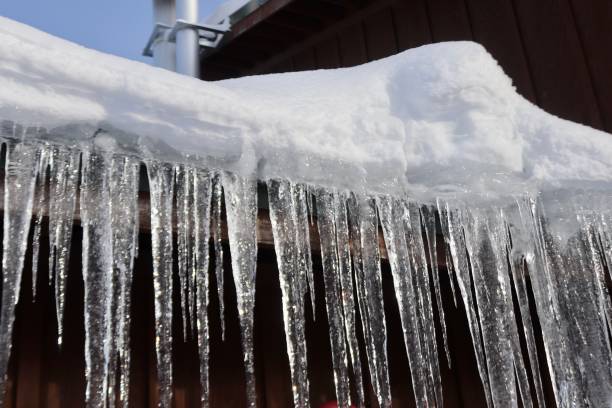The article down below involving How to prepare your home plumbing for winter weather is without a doubt compelling. Give it a go and draw your own results.

Cold weather can ruin your pipes, particularly by freezing pipelines. Here's exactly how to stop it from taking place and what to do if it does.
Introduction
As temperature levels drop, the threat of icy pipelines rises, possibly bring about expensive repair services and water damages. Comprehending exactly how to avoid icy pipelines is critical for homeowners in cold climates.
Prevention Tips
Insulating susceptible pipes
Wrap pipes in insulation sleeves or make use of warm tape to secure them from freezing temperatures. Focus on pipelines in unheated or outside areas of the home.
Heating techniques
Keep interior areas sufficiently heated, specifically locations with plumbing. Open cabinet doors to permit cozy air to flow around pipes under sinks.
Just how to identify icy pipelines
Try to find decreased water flow from faucets, unusual odors or noises from pipes, and visible frost on exposed pipelines.
Long-Term Solutions
Architectural changes
Think about rerouting pipelines far from outside wall surfaces or unheated locations. Include additional insulation to attics, basements, and crawl spaces.
Upgrading insulation
Invest in top notch insulation for pipes, attic rooms, and wall surfaces. Appropriate insulation assists preserve constant temperatures and reduces the danger of icy pipelines.
Safeguarding Outdoor Plumbing
Yard hoses and outside taps
Separate and drain garden tubes before winter season. Mount frost-proof faucets or cover exterior taps with protected caps.
Recognizing Frozen Pipelines
What triggers pipes to freeze?
Pipes ice up when subjected to temperature levels below 32 ° F (0 ° C) for extended durations. As water inside the pipelines ices up, it broadens, putting pressure on the pipeline walls and potentially creating them to break.
Risks and problems
Frozen pipelines can lead to water system interruptions, residential property damages, and expensive repairs. Burst pipelines can flooding homes and create extensive structural damage.
Signs of Frozen Water Lines
Identifying frozen pipes early can avoid them from bursting.
What to Do If Your Pipes Freeze
Immediate actions to take
If you think icy pipelines, maintain faucets available to ease stress as the ice thaws. Use a hairdryer or towels taken in hot water to thaw pipes gradually.
Verdict
Protecting against icy pipelines needs aggressive measures and quick feedbacks. By recognizing the causes, signs, and safety nets, house owners can shield their plumbing during winter.
5 Ways to Prevent Frozen Pipes
Drain Outdoor Faucets and Disconnect Hoses
First, close the shut-off valve that controls the flow of water in the pipe to your outdoor faucet. Then, head outside to disconnect and drain your hose and open the outdoor faucet to allow the water to completely drain out of the line. Turn off the faucet when done. Finally, head back to the shut-off valve and drain the remaining water inside the pipe into a bucket or container. Additionally, if you have a home irrigation system, you should consider hiring an expert to clear the system of water each year.
Insulate Pipes
One of the best and most cost-effective methods for preventing frozen water pipes is to wrap your pipes with insulation. This is especially important for areas in your home that aren’t exposed to heat, such as an attic. We suggest using foam sleeves, which can typically be found at your local hardware store.
Keep Heat Running at 65
Your pipes are located inside your walls, and the temperature there is much colder than the rest of the house. To prevent your pipes from freezing, The Insurance Information Institute suggests that you keep your home heated to at least 65 degrees, even when traveling. You may want to invest in smart devices that can keep an eye on the temperature in your home while you’re away.
Leave Water Dripping
Moving water — even a small trickle — can prevent ice from forming inside your pipes. When freezing temps are imminent, start a drip of water from all faucets that serve exposed pipes. Leaving a few faucets running will also help relieve pressure inside the pipes and help prevent a rupture if the water inside freezes.
Open Cupboard Doors
Warm your kitchen and bathroom pipes by opening cupboards and vanities. You should also leave your interior doors ajar to help warm air circulate evenly throughout your home.

I recently found that page about Prevent Frozen Pipes when doing a search on the search engines. For those who enjoyed our blog posting plz do not forget to share it. Many thanks for your time spent reading it.
Schedule An Appointment